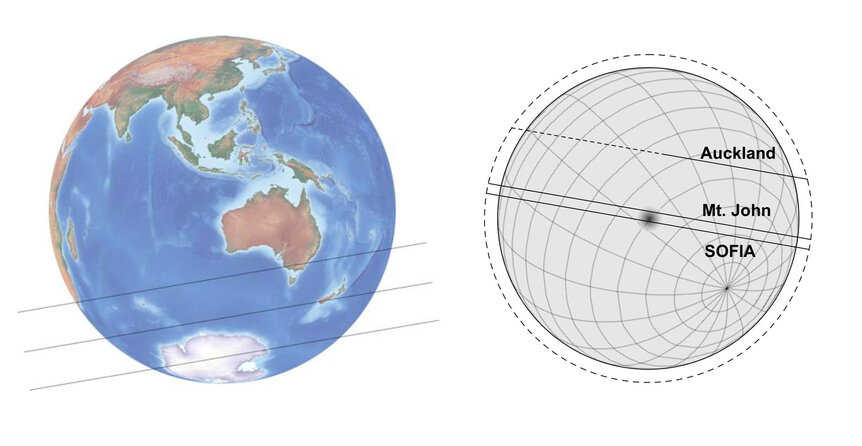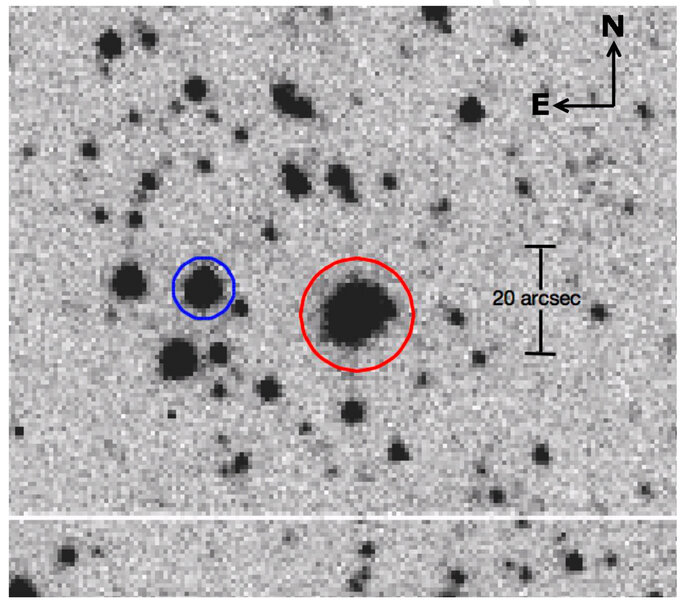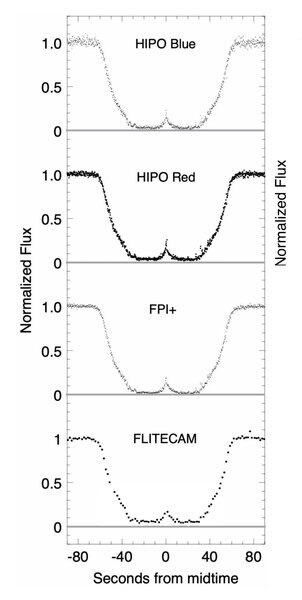Create a free profile to get unlimited access to exclusive videos, sweepstakes, and more!
Breathe easy: Pluto's atmosphere isn't about to collapse

Pluto haze all in my brain
Lately things don't seem the same
Actin' funny, but I don't know why
'Scuse me while I collapse the sky
— Jimi Hendrix, kinda
A shadow Pluto cast across the Earth reveals that its atmosphere isn't collapsing.
Cool! But yeah, OK, let me explain.
On 29 June 2015, Pluto passed directly in front of a faint star as seen from Earth, creating a kind of mini-eclipse. Pluto has an atmosphere: A very thin one, sure, but it's there. As Pluto moved in front of the star, the atmosphere bent the light passing through it, changing how bright the star appeared. By very carefully measuring that change a lot can be inferred about the atmosphere, including what's in it, how much stuff is in it, and how much it's changing over time.
That's important. Pluto's orbit is highly elliptical, and it's been moving away from the Sun for some time now. Astronomers have thought that it's possible that once Pluto was far enough away from the Sun its temperature would drop so much the atmosphere would collapse: The gas would freeze and fall to the surface as snow until no more atmosphere was left.
Whoa. Literally cool. But is it true?
To find out, astronomers observed Pluto passing in front of the star — an event we call an occultation — with multiple telescopes, including SOFIA, a 2.7-meter infrared telescope that's onboard a Boeing 747 aircraft, literally looking out through a hole in the side. This gets the 'scope above most of Earth's atmosphere, where it can more clearly see infrared light from space.
The occultation was only visible along a path across the southern Indian and Pacific Oceans, so SOFIA flew out from New Zealand to observe it. And at the predicted time, sure enough, it watched as the starlight dipped to zero, then came back up again. The star, called UCAC2 139-209445, is actually about 5 times brighter than Pluto, though still pretty faint.
As you can see, the star didn't just blip out when Pluto passed in front; it dropped over about the course of one minute (the bump in the middle is due to a phenomenon called the central flash, where the light from the star is bent by the atmosphere toward the center of Pluto's disk in such a way that you get a sudden brightening; I've described this before for other events like this), then rose again at the same rate. These curves tell scientists what they need to know about Pluto's atmosphere.
Specifically, that the pressure of the middle atmosphere hadn't changed from measurements taken in 2011 and 2013. If the air were freezing out, you'd expect a drop in pressure over time, especially over this time range (Pluto passed closest approach to the Sun in 1989 and has been pulling away ever since). While it may yet still change in the coming decades, the idea that it might suddenly collapse seems less likely.
But there's more, too. The occultation happened just two weeks before the New Horizons spacecraft zipped past Pluto in July 2015. Images of the tiny world taken from the far side, when it was backlit by the Sun, showed the atmosphere as a blue ring circling the planet (blue for the same reason Earth's is; scattering of light by nitrogen molecules). It also showed layers in the atmosphere, which were presumed to be caused by haze particles, teeny clumps of complex organic (carbon-based) molecules.
The SOFIA data confirms that's what these are: Particles 0.06 – 0.1 microns wide. For comparison, a human hair is 100 microns thick, so yeah, these are small. So small, in fact, that they can stay suspended in Pluto's air for some time.
The idea is that Pluto's air is generated as sunlight warms the icy surface, releasing nitrogen, carbon monoxide, and methane. The latter two rise up to great heights where ultraviolet sunlight zaps them, breaking them apart, and they reform to create more complex molecules. This is what creates the layers of haze seen by New Horizons.
Pluto slowly loses its air as the solar wind, generated six billion kilometers sunward, blows it away from the top of the atmosphere, and is replenished by the ice. Over the lifetime of Pluto it's lost up to 3 kilometers of surface ice from this!
So if there's anything you take away from all this, it's that Pluto is a dang weird place. And, with its atmosphere stable, it looks like it'll stay that way for a while yet.


















